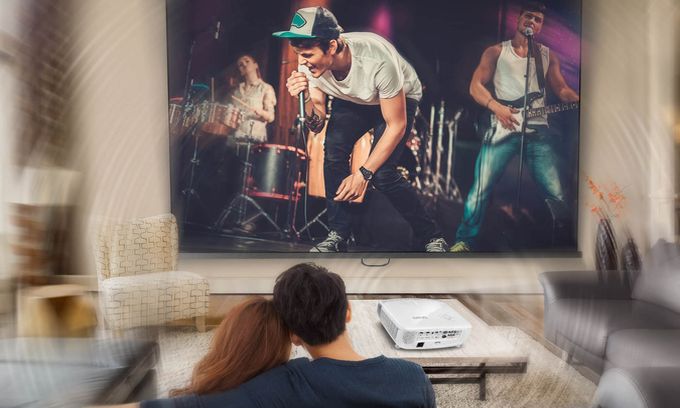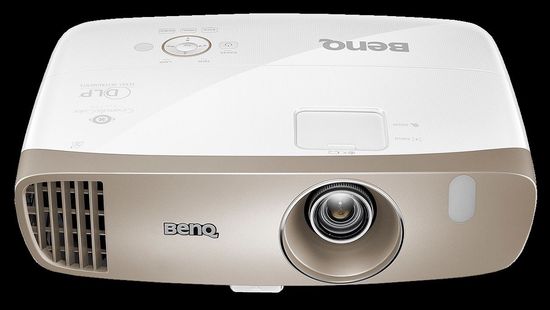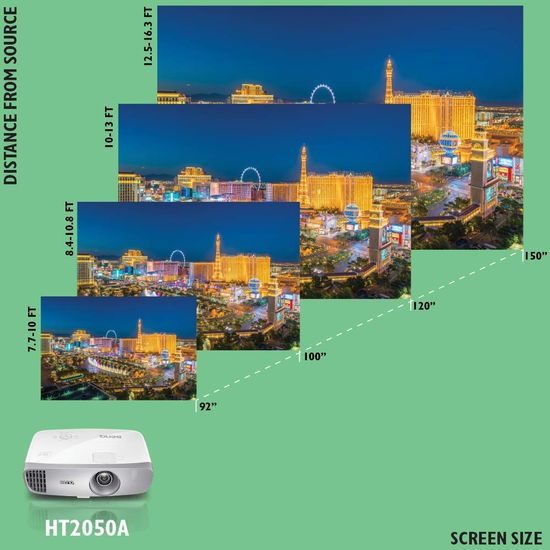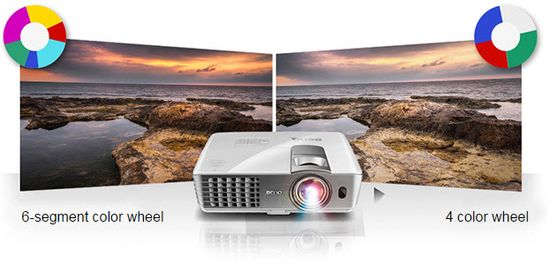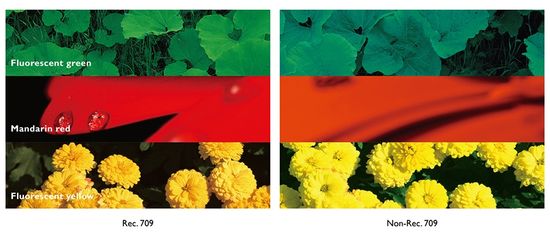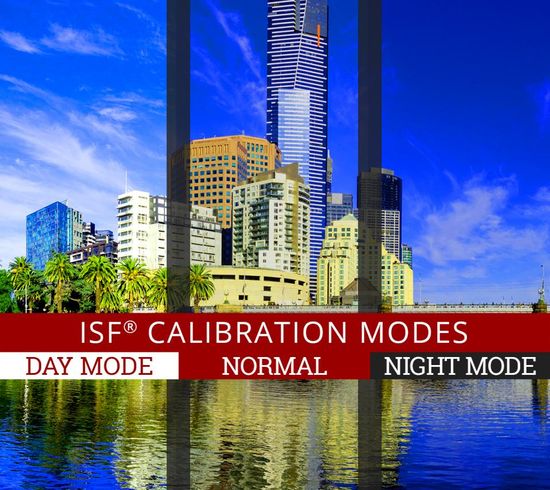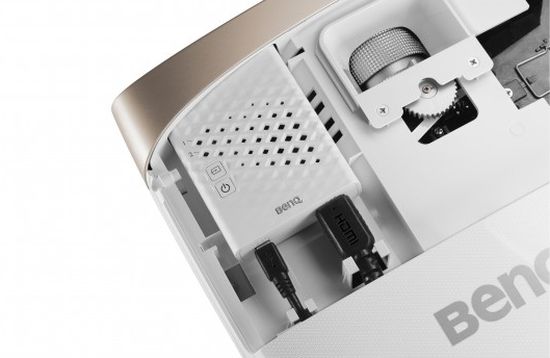In 2018, BenQ HT2050A was a continuation of the popular budget Full HD BenQ HT3050 (W2000 in Europe) and BenQ HT2050 (W1110) projectors. Of course, all these models have some differences. But overall, BenQ HT3050 vs BenQ HT2050 vs BenQ HT2050A demonstrates a high degree of similarity, including image quality, basic specs, and even design. It’s absolutely identical, except for the color of the front panel. It has brushed gold color in BenQ HT3050 and brushed silver in BenQ HT2050 and BenQ HT2050A.
Among home theater projectors in the price range of $ 500 to $ 650, the slightly more expensive BenQ HT2050A ($ 750) shows significantly higher image quality. In particular, it provides significantly darker blacks, higher contrast, and a better perception of 3D.
In tests from reputable Projector Central, HT2050A demonstrated excellent image quality with maximum brightness. The actual brightness reaches 1840 ANSI lm, although the spec indicates of 2200 ANSI lm. But most importantly, the projector demonstrates fairly accurate color rendering without green hues in the brightest modes, even with factory presets without additional calibration.
Of course, this aspect attracts the consumer, freeing him from the need to solve the calibration problem after purchase. In principle, it’s quite simple, but requires some skills.
Optimized for video settings reduce brightness to 1530 ANSI lm. But even it provides comfortable viewing for 200″ diagonal 16:9 image in a dark room with a 1.3 gain screen or a 125″ image with moderate ambient lighting. At the same time, the company warns of a possible deterioration of the focus at 180″ diagonal and larger.
Color Preset Mode Performance and brightness
Testing brightness
– Bright – 1839/1228 ANSI lm (Normal/Eco);
– Vivid TV – 1528/1021;
– Cinema – 1088/726;
– Game – 1537/1027.
Eco mode reduces brightness by about 33% compared with Normal mode. Projector also has a SmartEco mode. It works as an auto iris, dimming the dark scenes. Accordingly, reducing the brightness level reduces energy consumption (up to 70%) and increases lamp life.
The projector brightness has almost no Zoom Lens Effect. In the full telephoto setting, the 1.3x zoom reduces the brightness by only 6%.
According to most experts, SDR (Standard Dynamic Range) is optimal for Cinema mode. It retains the subtle gradients of light and color.
Adjusting the shades for red and green in the default settings for Vivid TV gives a close match to a reference image without any loss of brightness. It also provides a dark black with excellent contrast and sense of three dimensionality.
The 1528 ANSI lm may be too bright. The 1528 ANSI lm may be too bright. It’s well suited for the 180″ diagonal in a dark room or for 110″ with moderate ambient light. Eco-modes provide sufficient brightness for 120″ diagonal and less in a dark room.
Unfortunately, the brightest mode has traditional a green bias. But it practically does not interfere with perception due to insignificance. Although the comparison with the reference image allows you to see it. Maximum brightness in Bright mode provides a comfortable viewing even in the daylight, but, of course, without sunlight.
Vivid TV mode eliminates the green bias and and improves color saturation.
Color accuracy in default presets of Game and Cinema modes is similar to Vivid TV.
PROS & CONS
Pros
– 1.3x zoom exceeds similar values of other models in this price segment;
– shorter-than-typical throw ratio (1.15 – 1.5) provides increase in projection size in small room (100″ @ 2.5m).
– RGBRGB color wheel without white segment (CinematicColor technology) provides excellent quality color.
In addition, the six-panel color wheel almost completely blocks the creation of rainbow artifacts;
– excellent 96% REC.709 coverage in Cinema mode.
– 3,500/5,000/7,000 hour service lamp life in full power/Eco/SmartEco modes;
– vertical lens shift +10%;
– vertical & horizontal (2D) ± 30° keystone correction;
– two 2 HDMI 1.4a ports;
-onboard 10-watt mono speaker provides very good sound quality with Cinema, Game, Music and Sports modes;
– unprecedented low input lag in Fast mode does not exceed 16.4 ms;
– Full 3D with minimal brightness drop uses DLP-Link glasses;
– the projector supports ISF color calibration for Day and Night modes (unfortunately, it requires a separate payment).
– the model supports optional wireless FHD kit for wireless uncompressed streaming at up to 1080p 60Hz and WiFi dongle for connection to mobile devices.
– excellent 3 years warranty and 2000 hours for the lamp. For comparison, usually it does not exceed 1 year in this price segment.
Cons
– lamp replacement cost reaches of $249 that significantly more expensive compared to average for this segment;
– fixed vertical offset creates a problem when installed on shelf behind the point of view.
Of course, all these factors affect the choice of the optimal projector.
This video shows the BenQ HT2050A review.
